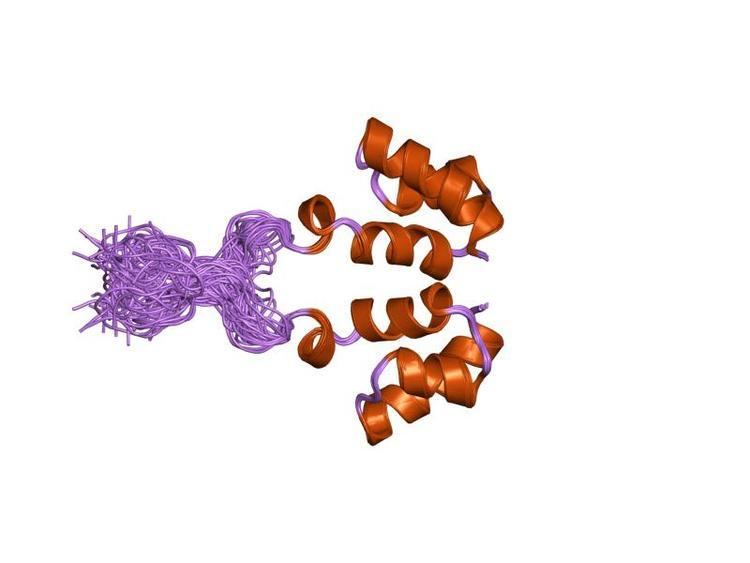Symbol Integrase_Zn InterPro IPR003308 SUPERFAMILY 1wjb | Pfam PF02022 SCOP 1wjb Pfam structures | |
 | ||
Retroviral integrase (IN) is an enzyme produced by a retrovirus (such as HIV) that enables its genetic material to be integrated into the DNA of the infected cell. Retroviral INs are not to be confused with phage integrases, such as λ phage integrase (Int) (see site-specific recombination).
Contents
IN is a key component in the retroviral pre-integration complex (PIC). The complex of integrase bound to cognate viral DNA (vDNA) ends has been referred to as the intasome.
Structure
All retroviral IN proteins contain three canonical domains, connected by flexible linkers:
Crystal and NMR structures of the individual domains and 2-domain constructs of integrases from HIV-1, HIV-2, SIV, and Rous Sarcoma Virus (RSV) have been reported, with the first structures determined in 1994.
Biochemical data and structural data suggest that retroviral IN functions as a tetramer (dimer-of-dimers). All three domains are important for multimerisation and viral DNA binding. Early in 2010, scientists solved the crystal structure of IN from prototype foamy virus (PFV) assembled on viral DNA ends.
In addition, several host cellular proteins have been shown to interact with IN to facilitate the integration process. Human chromatin-associated protein LEDGF, which tightly binds HIV IN and directs HIV PIC towards highly expressed genes for integration, is an example of such a host factor.
Function
Integration occurs following production of the double-stranded viral DNA by the viral RNA/DNA-dependent DNA polymerase reverse transcriptase.
The main function of IN is to insert the viral DNA into the host chromosomal DNA, a step that is essential for HIV replication. Integration is a point of no return for the cell, which becomes a permanent carrier of the viral genome (provirus). Integration is in part responsible for the persistence of retroviral infections. After integration, the viral gene expression and particle production may take place immediately or at some point in the future. The timing, it is presumed, depends on the activity of the chromosomal locus hosting the provirus.
Retroviral IN catalyzes two reactions:
Both reactions are catalysed by the same active site and occur via transesterification, without a covalent protein-DNA intermediate, in contrast to reactions catalysed by Ser and Tyr recombinases (see site specific recombination).
HIV IN
HIV integrase is a 32 kDa protein produced from the C-terminal portion of the Pol gene product, and is an attractive target for new anti-HIV drugs.
In November 2005, data from a phase 2 study of an investigational HIV integrase inhibitor, MK-0518, demonstrated that the compound has potent antiviral activity. On October 12, 2007, the Food and Drug Administration (U.S.) approved the integrase inhibitor Raltegravir (MK-0518, brand name Isentress TM). The second integrase inhibitor, elvitegravir, was approved in the U.S. in August 2012.
The crystal structure of human foamy virus integrase has been examined successfully.
This protein may use the morpheein model of allosteric regulation.
